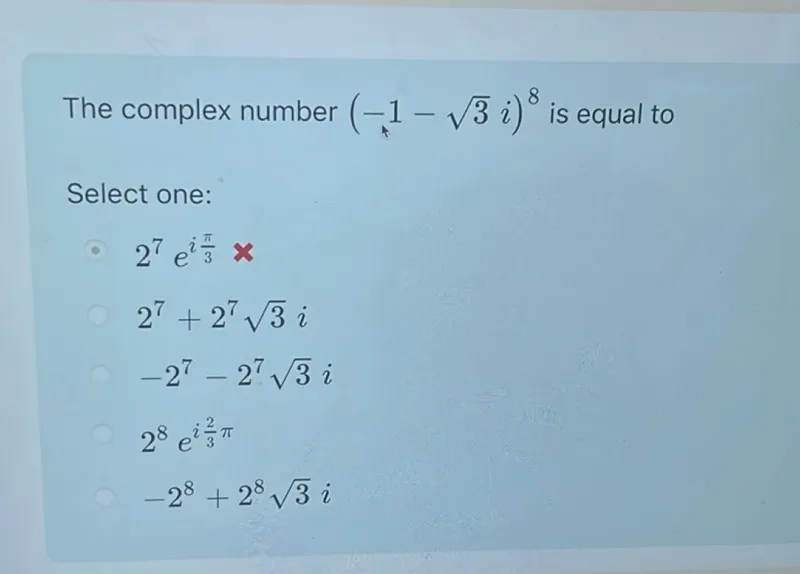Questions: The complex number (-1-sqrt(3) i)^8 is equal to Select one: 2^7 e^(i pi/3) 2^7+2^7 sqrt(3) i -2^7-2^7 sqrt(3) i 2^8 e^(i 2/3 pi) -2^8+2^8 sqrt(3) i

Transcript text: The complex number $(-1-\sqrt{3} i)^{8}$ is equal to
Select one:
$2^{7} e^{i \frac{\pi}{3}}$
$2^{7}+2^{7} \sqrt{3} i$
$-2^{7}-2^{7} \sqrt{3} i$
$2^{8} e^{i \frac{2}{3} \pi}$
$-2^{8}+2^{8} \sqrt{3} i$





